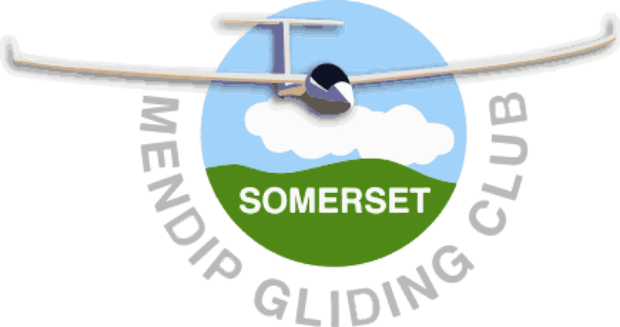LAUNCHING METHODS
Before we can start gliding, we need to get the glider into the air. There are two methods available at Halesland for achieving this. The winch tow has the highest rate of acceleration and steepest climb attitude and has more of a “wow” feel to it, while the aerotow is more gentle in both rate of acceleration and climb.
Winch Launch
The most frequently used method for launching gliders into the air at Mendip Gliding Club is the winch launch.
For this, we have a Skylaunch winch powered by a V8 Chevrolet engine and fuelled by LPG (it uses approximately one litre per launch). Some 800m (about 2600ft) of steel cable is pulled out from the winch to the launch point. The cable is connected to the glider’s belly hook via a weak link (rated to the glider’s weight). When the launch starts, the cable is reeled in. Acceleration is rapid and the glider is very quickly airborne – usually within two or three aircraft lengths. After the minimum safety speed of 50 knots is attained, the glider will be “rotated” into its normal climb attitude, which is at an angle of about 45° to the ground. No forward view is possible at this steep climb and the pilot controls the glider’s attitude by looking sideways to either wing and the horizon beyond. Climbs of up to 1600ft are possible under the most favourable circumstances although a normal launch is between 900ft and 1300ft. At the top of the launch, the pilot will push the nose down to reduce the tension in the cable and will pull the cable release to start the soaring flight, the cable returning to the ground under a parachute.
Aerotow
The glider to be aerotowed is connected to our tow aircraft by about 200ft of towrope. The two aircraft combination has a gentle acceleration and the glider will become airborne first. The glider pilot aims to “unstick” the glider from the ground as soon as possible and will limit his ascent to about 10ft above the ground until the tow aircraft has taken off (the tow aircraft requires more speed to lift off than the glider). The glider will settle into its tow position behind the towplane. The tow combination will then fly along the ridge until a height of 2000ft (or higher if requested) above the site is attained.
The glider will then release the tow cable and enter a climb to the left (until it converts its excess speed to additional height) while the Falke will enter a dive to the right ensuring a safe separation between the two aircraft.
The tow pilot, when possible, will tow the glider to any obvious sources of lift that may be beyond the reach of the winch-launched glider. The aerotow offers additional height from which the soaring pilot can seek thermals to aid his start on a cross-country flight while the additional height from the aerotow will give the trainee pilot the “stick time” required for exercises.


